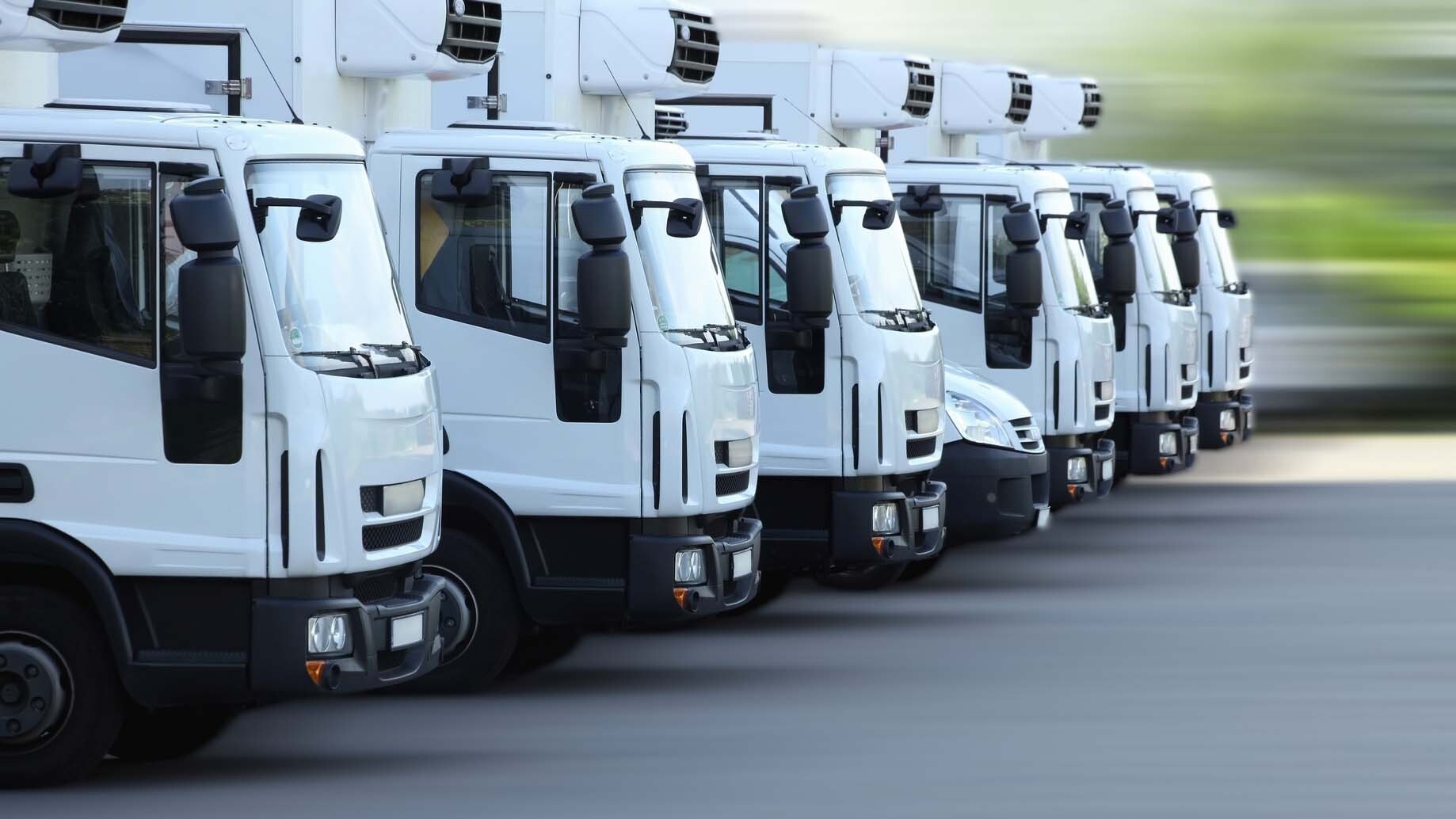
Kunden.Profitabler.Beliefern
Diese Podcast-Serie soll Wissen vermitteln, wie man den Lkw-Fuhrpark mit modernen Mitteln der Digitalisierung effizienter führen kann.
Experten kommen zu Wort zu den Themen Tourenplanung, Temperaturmanagement, Kundenerfolgsrechnung, elektronische Arbeitszeiterfassung. Fahrerkartenarchiv, Truck-Tablet, Förderprogramme, Kamerasysteme und vieles mehr.
Episodes

Thursday Feb 08, 2024
Thursday Feb 08, 2024
Heute haben wir im Podcast den Fördermittelexperten Thomas Weick, der uns erklärt, dass auch im Jahr 2024 Unternehmen, die Maut-LKW besitzen, Fördermittel erhalten, wenn diese richtig und rechtzeitig beantragt werden.
Heute haben wir im Podcast den Fördermittelexperten Thomas Weick, der uns erklärt, dass auch im Jahr 2024 Unternehmen, die Maut-Lkw besitzen, Fördermittel erhalten, wenn diese richtig und rechtzeitig beantragt werden.
2.329
SATLOG
Fördergelder für Maut-Lkw aus dem De-minimis wird US. Oder, wenn man das anders ausdrückt, im Jahr 2024 wird aus dem altbekannten De-minimis das Programm US: Umwelt und Sicherheit des Bundesamts für Logistik und Mobilität (BALM) in Deutschland.
26.834
SATLOG
Und darum geht es heute in unserem Podcast. Denn warum machen wir das Heute? Eine große Erleichterung gab es für Unternehmen am 5. Februar 2024, als bekannt wurde, dass nach längerer Abstimmung mit EU-Regeln das alte Förderprogramm für Lkw, das es ja schon seit über zehn Jahren gibt, weitergeht.
50.811
SATLOG
Und damit haben nämlich Fuhrparks auch ab einem Lkw bis zu 17 Fahrzeugen Anspruch, solange es Maut-Lkw sind, auf Fördermöglichkeiten von bis zu 33.000 Euro oder 2.000 Euro pro Fahrzeug im Jahr.
69.565
SATLOG
Und das können Sie eben ausgeben für Effizienzmaßnahmen. Und darum geht es heute in unserem Podcast mit dem Experten zu diesem Thema, Herrn Thomas Weick von Weick Consulting. Und das ist ein Unternehmen, das seit mehr als zehn Jahren sich um die Fördermittel im Transportwesen kümmert, mehr als 600 Unternehmen zu Fördergeldern verholfen hat. Willkommen, Thomas Weick in unserem Podcast.
97.312
Thomas Weick
Ja, herzlichen Dank, Herr Dr. Stausberg, für die Einladung auch zu diesem Podcast. Wir als Vermittelberatung haben natürlich jetzt viele Aufgaben, logischerweise seit dem 5.2., als der Antrag gestartet hat. Ich freue mich, dass ich hier sein kann, bei Ihnen, mit Ihnen zu plaudern über die Fallstricke und Möglichkeiten des in Anführungsstrichen neuen Förderprogramms. Also, neuer Name ist nicht unbedingt neues Förderprogramm. Aber da gehen wir später nochmal darauf ein.
130.247
SATLOG
Genau, es wundert mich ohnehin eigentlich, warum gibt es denn so eine Expertenfirma wie Weick-Consulting schon so lange gibt, denn De-minimis kann man ja im Internet anklicken oder auch jetzt US und dann irgendwie Förderanträge herunterladen, aber warum gibt es dann jetzt eigentlich bei Weick-Consulting?
151.63
Thomas Weick
Das ist natürlich leicht erklärt. Wir haben, wie schon altbekannt, einen Förderdschungel in Deutschland. Und der ist natürlich bei dem BALM-Programm, das wir seit mittlerweile 15 Jahren sogar schon betreuen, für mittlerweile über 900 Unternehmen sehr, sehr intensiv in den Änderungen. Was man jetzt quasi schon in dieser Umbenennung erfahren konnte.
165.794
SATLOG
Oh!
181.886
Thomas Weick
Und das führt eben dazu, dass viele Antragsteller entweder den Antragsstart verpassen oder dann eben auch den Abruf verpassen. Das ist eigentlich erstmal unsere hauptsächliche Aufgabe. Die ist es nämlich, den Antragstellern zu ermöglichen, dass sie auch ihr Fördergeld bekommen. Und das ist aufgrund der Fristen oder Fristenregelung eben nicht so einfach. Wenn man die Frist verpasst hat, gibt es einfach nichts und das ist dann auch sehr frustrierend, wenn man auf eine Förderung eine Investition getätigt hat.
217.449
SATLOG
Man hat sich darauf verlassen und wir haben ja hier auch Aussagen von Firmen, die eben das mal selbst versucht haben und die dann sagen also furchtbar: Fehler bei der Antragstellung 2010, 2011, das hat uns so viel Geld gekostet.
Wir haben auch bei den Verwendungsnachweisen das alles nicht so richtig gemacht. Riesenkomplexität, die Mitarbeiter überlastet. Bau-Logistiker Hans-J. Dietsch GmbH & Co. KG, der hat da also gelitten und ist wohl seit der Zeit ihr treuer Kunde.
Und das ist wohl alles sehr, sehr komplex. Und deswegen haben wir Sie ja genau heute im Podcast. Und warum heißt das ganze Ding denn jetzt eigentlich US und nicht mehr De-Minimis, weil jeder weiß ja, was das ist: De-minimis.
271.968
Thomas Weick
Genau, also da muss man dazu erklären, dass sich der Begriff De-minimis eigentlich in dieses Programm reingeschlichen hat. Warum? Weil die dieses Förderprogramm wird auf der D-minimis-Richtlinie eingereicht und diese De-Minimis-Richtlinie, die wird allerdings für alle Förderprogramme auf EU-Ebene genutzt, die über die Kleinbeihilferegelung eben gedeckelt sind, gedeckelt in dem Moment, dass man sagt, okay, ich nehme dieses De-Minimis als Förderrichtlinie, die EU macht hier die Regelungen, um auch keinen Wettbewerb zu verzerren innerhalb der EU. Das heißt, das ist eine Kleinbeihilfe, De-minimis Aber dieser Wortbegriff, der hat sich eben in dieses Förderprogramm eingeschlichen und ist eigentlich schon immer nicht korrekt gewesen, weil es hieß ja früher das Förderprogramm Sicherheit und Umwelt. Und diese Sicherheit und Umwelt, das wurde jetzt einfach umgestellt auf Umweltschutz und Sicherheit. Also auch unter der Vorgabe zu suggerieren, man hat jetzt hier ein neues Förderprogramm. Aber wenn man jetzt ein bisschen genauer reinschaut, dann sieht man, dass sich eigentlich nicht viel geändert hat, außer dass der Antragsstaat sich jetzt verschoben hat, also die 2.000 Euro pro mautpflichtigen Fahrzeug blieben gleich, die 33.000 Höchstgrenze, obwohl ja die De-Minimis- Richtlinie jetzt ab 1.1.2024 beispielsweise ja 300.000 Euro pro Unternehmen zulässt, aber diese 300.000 Euro, die kann ich eben nur dann in Anspruch nehmen, wenn das über die Richtlinie auch freigegeben ist. Hier haben wir jetzt einen kleinen, ich sage jetzt mal, auch einen Überschneidungsthema, wo wir auch ein bisschen gebraucht haben, bis wir es verstanden hatten. Wir haben ja in diesem Förderprogramm eine De-Minimis-Richtlinie, die eigentlich am 1.1.2024 geendet hat. Jetzt hat aber die EU gesagt, na ja, wir sind jetzt mal ein bisschen großzügig, ihr könnt die alte Richtlinie weiter benutzen, bis zum 30.06.
Und diese Weiternutzung, das nimmt jetzt quasi das BALM wahr und sagt einfach, alles klar, wir nehmen die alte Richtlinie, bauen auf der mit einem geänderten Namen einen neuen Antrag und machen im Prinzip seitens mal so weiter wie bisher, aber eben nur bis zum 30.06., weil da diese Richtlinie ausläuft und deswegen ist auch hier das Ende dieser Förderperiode, also beziehungsweise für die Antragstellung, erstmal der 31.5., also ich kann nur vom 5.2. bis zum 31.5. Anträge einstellen. Und die Bescheids-Erstellung, die muss eben dann bis zum 30.6. erfolgt sein, weil bis dahin nur die alte Richtlinie gilt. Und deswegen haben wir diese, ich sag jetzt mal, auch verschlechterte Bedingungen jetzt in der Kürze dieser Antragsphase.
450.708
SATLOG
Und ich hatte vermutet, dass das jetzt vielleicht mit den Sprintern zusammenhängt, denn diese Fahrzeuge ab 3,5 Tonnen, die kommen jetzt auch Mitte des Jahres in die Maut und dass man dann sagt, okay, und dann starten wir nochmal neu.
465.947
Thomas Weick
Also das ist tatsächlich auch, das haben wir auch am Anfang gedacht, dass das vielleicht damit zusammenhängt, aber klar, also es ist rein wegen der Richtlinie, aber natürlich ist das auch ein Effekt, der jetzt passiert, also quasi, wir haben ja 200.000 Fahrzeuge, die jetzt quasi dazukommen ab dem 1.7.in der Maut Fakturierung. Also es sind jetzt ganz 200.000 wahrscheinlich, weil ja Werkverkehr oder Handwerkerregelungen da rausfallen. Also es betrifft ja nur die Fahrzeuge, die tatsächlich im Fernverkehr oder beziehungsweise im Werkverkehr unterwegs sind auf längeren Strecken. Und dieser Umstand, der führt allerdings jetzt zu was anderem, und zwar, dass jetzt die 2025er-Richtlinie tatsächlich ein neues Förderprogramm sein wird, für 2025 muss jetzt quasi ein neues Förderprogramm auf Basis der neuen EU-Verordnung und auf Basis der nationalen Förderung, eine neue nationale Förderrichtlinie wird jetzt quasi erarbeitet, die dann 2025 für dieses Förderprogramm gilt.
539.753
Thomas Weick
Entschuldigung, 2025, genau, sodass 2025 für den Sprinter dann in 2025 verwendet werden kann. Genau, aber erst ab 2025 und wahrscheinlich in diesem Jahr überhaupt nicht.
565.708
Thomas Weick
Also in diesem Jahr überhaupt nicht, weil das ja alles noch auf der alten Richtlinie läuft und die alte Richtlinie besagt im Prinzip, dass ja maximal Fahrzeuge ab 7,5 Tonnen förderfähig sind.
575.297
SATLOG
Jaja. Jaja, genau. Und eben sagten Sie Sprinter im Werkverkehr nur, wenn sie längere Strecken fahren. Wie muss ich das verstehen? Wird da untergliedert in Fernverkehr und Nahverkehr?
591.101
Thomas Weick
Genau, es gibt eine Handwerkerregelung, da sind viele Fahrzeuge quasi ausgenommen, also die sind dann nicht mautpflichtig. Diese Handwerkerregelung, also die kennt man jetzt nur von früher, das waren so 80 Kilometer im Umkreis, wenn er da quasi seine eigenen Baustellen auch mit Material befährt oder jetzt mal Personen und Material zur Baustelle hinbringt und wieder wegholt, dann sind diese Fahrzeuge von der Maut ausgeschlossen.
Die werden aber dann auch logischerweise nicht förderfähig. Also wir nehmen an, dass 2025 quasi eine neue Richtlinie entsteht, in der jetzt quasi dann Fahrzeuge zwar beantragt werden können ab 3,5 Tonnen, aber die werden wahrscheinlich nicht die gleiche Fördersumme bekommen wie jetzt ein 18 bis 40 Tonner, weil der ja viel mehr mal bezahlt und der Kleine, der zahlt ja auch nur die Hälfte.
650.93
Thomas Weick
Aber es ist ein interessantes Thema, zumal wir 450 Millionen Euro im Bundesfernstraßenmautgesetz sind ja quasi festgeschrieben worden. Diese 450 Millionen, die würden jetzt natürlich dann für die zusätzlichen Fahrzeuge nicht ausreichen. Da ist jetzt quasi dann auch wieder unser Bundesverkehrsminister, der Herr Wissing, gefordert, nämlich er müsste die Mittel natürlich dann anheben. Er bekommt ja auch mehr Geld logischerweise, aber
Geld führt nicht unbedingt auch zu mehr Ausgaben, wie man weiß. Und dementsprechend ist es schon eine Herausforderung, also neue Richtlinien, ein anderes Budget, wie wir das dann verteilen, also eine ganz besondere Aufgabe.
694.889
SATLOG
Ja, ja, genau. Oh ja, man sieht die Komplexität. Und Sie hatten ja dann auch noch mal in einem Newsletter geschrieben, dass es jetzt aufgrund der schwachen Haushaltsmittel, dass da jetzt irgendwie die Anträge aus 2023 nicht bedient werden oder wird da nichts mehr ausgezahlt, wird dann nicht vollständig ausgezahlt?
710.981
Thomas Weick
Genau, genau. Das ist ein Riesenthema. Also wir haben ungefähr 5.800 Anträge, nicht beschieden, aus 2023. Das betrifft alle ersten Folgeanträge, die ab Mai gestellt worden sind. Aber hier bieten wir natürlich an, für unsere Mandanten kostenfrei, für andere, für eine Pauschale, auf jeden Fall hier ins Widerspruchsverfahren zu gehen. Warum?
739.121
Thomas Weick
Es wurde ja einfach abgelehnt, weil man gesagt hat, die Haushaltsmittel reichen nicht aus. Das ist natürlich Quatsch, weil es stehen ja Haushaltsmittel zur Verfügung. Die stehen ja quasi im Moment zur Verfügung im Bereich von 250 Millionen Euro. Nur die werden jetzt nicht mehr verwendet, um die ersten Folgeanträge aus dem letzten Jahr zu bescheiden, wie das übrigens acht Jahre lang ganz normal gemacht wurde. Also, ohne dass da irgendjemand gesagt hat, wir haben keine Haushaltsmittel mehr.
Und jetzt will man das quasi auf dem Jährlichkeitsprinzip abwürgen, also die alten Erst- und Folgeanträge, das mitten in einer Förderperiode zu machen. Also ich sage jetzt mal, wenn ich das jetzt sage, ich mache das für nächstes Jahr, dann kann sich der Antragsteller darauf einstellen, dann sagt er, okay, alles klar, ich weiß Bescheid, nächstes Jahr, wenn ich zu spät komme mit meinem Antrag, dann kriege ich eben keine Zuwendung mehr. Wenn ich dann am Ende der Förderperiode bin, dann warte ich mal lieber, bis ich einen Zuwendungsbescheid habe und mache dann meine Investition. Aber jetzt ist es ja so, er hat darauf vertraut, der Antragsteller, dass das so ist, wie im letzten Jahr auch oder wie in den letzten Jahren auch, also acht Jahre lang.
796.817
SATLOG
Genau. Genau. Ja, ja. Ja, ja. Genau.
808.695
Thomas Weick
Es hat keiner davon was erzählt, dass es keine ersten Folgeanträge mehr gibt, die beschieden werden. Und das nennt sich Vertrauensschutz. Und Vertrauensschutz, das ist etwas, das hat der Antragsteller im Förderverfahren. Da gehen wir natürlich auch dagegen oder vor Gericht für die, die jetzt da keine Förderung mehr bekommen haben.
826.561
SATLOG
Ja ja, sehr gut. Also da sieht man auch wieder, der Nutzwert von Weick-Consulting hat.
Und es ist ja so, dass in diesen ganzen Paketen De-minimis, kann man die Kataloge ja im Internet sehen, da ist ja das Thema Telematik von besonderer Bedeutung, denn die Telematik schafft ja Effizienzvorteile und soll dann ja eben auch ausgleichend und kostensenkend wirken und diese ganzen Software Services, Mobilfunkkosten und auch Sicherheitsaspekte, also Rückfahrkameras, Seitenkameras, tote Winkelkameras und so weiter, das war alles bisher förderfähig und ist das nach wie vor so oder hat man da auch gekürzt?
869.104
Thomas Weick
Das ist absolut gleichgeblieben. Wir haben 80 Prozent der Förderung weiterhin auf alles, was mit Hardware zu tun hat im Telematikbereich, genauso wie für die Folgekosten, also für Kommunikationskosten, die weiterhin entstehen.
Die Thematik ist, wie bisher auch, weil es ja die alte Richtlinie ist, der Vertrag muss innerhalb einer Durchführungsfrist abgeschlossen worden sein. Eine Durchführungsfrist beginnt mit dem Tag der Antragstellung und endet dann nach dem Zuwendungsbescheid, also nach Eingang des Zuwendungsbescheides nach fünf Monaten. Also es kann ruhig unter Umständen sechs, sieben, acht, neun Monate sein.
Und was jetzt eben neu dazugekommen ist, beispielsweise als Maßnahmen, die jetzt in diesem Bereich vielleicht interessant sind, sind natürlich, wir haben den intelligenten Tachograph der Version 2, der mitgefördert wird. Da hat es ja manchmal Problematiken gegeben. Wir haben im Prinzip alles, was im Prinzip im Telematikbereich dazu auch der Sicherheit dient, Außenspiegelkamerasysteme, Umfeldkameras etc.
948.247
SATLOG
Reifen sind auch, glaube ich, dabei.
951.748
Thomas Weick
Reifen, Aerodynamiksysteme, Navigationssysteme, also Kosten für Frachtraumbörse, Kühltrennwände. Die bisherige Positivliste wurde um ein paar Maßnahmen ergänzt. Da ist der Spürrückführungsassistent dazugekommen. Was gut dazugekommen ist, ist bei einem beim Auflieger die Möglichkeit eines Palettenstaukastensystems. Das war vorher nicht möglich. Möglich sind auch Warnsysteme bei nachlassender Konzentration des Fahrpersonals.
986.884
SATLOG
Ja, Müdigkeit, ja. Ja, genau. Okay.
989.991
Thomas Weick
Genau, Einbau einer alkoholempfindlichen Wegfahrsperre, Warnsystem bei Müdigkeit, wie Sie gesagt haben. Also zusätzliche Anhänger, Auflieger, Beleuchtungsversorgung. Ein paar Sachen sind wir dazu bekommen, aber im Großen und Ganzen ist es ja der alte Maßnahmenkatalog mit derselben Förderquote. Also 80 Prozent auf die Kosten außer bei den Reifen, da sind die Förderquoten etwas verhindert.
1012.841
SATLOG
Genau. Und wenn man jetzt dann selber tätig werden will, dann landet man ja in diesem Förderdschungel und lädt sich dann irgendwie ein Antrag aus dem Internet und so weiter. Hatten wir eben alles schon besprochen. Und wenn ich das nicht tue und wenn ich mich an Weick-Consulting wende, und was muss ich dann tun, um jetzt hier durchzukommen und das Geld aufs Konto zu bekommen?
1033.831
Thomas Weick
Genau, also wir bieten ja einen Rundumservice. Das heißt, wir haben eine kostengünstige Pauschale entwickelt, mit der wir alle Förderanträge, Folgeanträge, Widerspruchsbescheide, Widerspruchsverfahren abgeben.
1048.234
Thomas Weick
Das ist ein Erfolgsmodell. Wie gesagt, wir haben mittlerweile fast tausend Unternehmen, die in diesem Vertrag drin sind. Und ich sage jetzt mal als Preisbeispiel, wenn Sie sechs Lkw haben, über 7,5 Tonnen, dann haben Sie normalerweise so ein De-minimis Abruf mit Weiterbildung etwas dabei, um die 18.000 Euro. Dafür zahlen Sie im Vierteljahr bei uns 450 Euro, zuzüglich Mehrwertsteuer. Das ist ein super Betrag. Wir können hier auch gut davon leben, dass wir immer nur weiterempfohlen werden. Also wir haben keinen aktiven Vertrieb, der jetzt hier Außendienst versucht, Verträge abzuschließen. Deswegen können wir auch unsere kostengünstige Pauschale weiterhin so beibehalten. Hier nochmal als Hinweis.
Gerade jetzt mit dieser neuen Förderperiode, diesen neuen Vorgaben, mit der verkürzten Antragstellungsfrist, mit auch dann einer verkürzten Durchführungsfrist, weil ich habe ja nur noch eine Durchführungsfrist, ich kann nicht nochmal einen Folgeantrag stellen.
Da wird es natürlich umso wichtiger, eine intensive Beratungsleistung durchzuführen. Was kann ich alles abrechnen? Wie muss mein Telematikvertrag abgeschlossen sein? Wie muss ich meine Reifen bestellen, wann muss ich die kaufen, damit ich sie auch rechtzeitig bezahlen kann? Dass das alles noch innerhalb der Durchführungsrechts passiert und das Geld eben nicht verloren geht. Das ist eine ganz, ganz wichtige Aufgabe auch für uns jetzt nochmal für dieses neue Förderfenster.
1143.114
SATLOG
Ja, ja.
1147.995
Thomas Weick
Genau, also hier nochmal als Hinweise, was habe ich denn für Risiken, das ist natürlich, ich habe zu wenig oder zu viele Fahrzeuge eingetragen bei der Antragstellung. Wir haben hier jetzt ein neues Förderverfahren, das jetzt quasi darauf aufbaut, dass man sagt, okay, ihr müsst die Fahrzeugscheine nicht nachreichen, einreichen mit der Antragstellung, sondern erst später. Das hat natürlich einen Vorteil, das geht schneller jetzt mit der Antragstellung, aber es hat natürlich einen riesigen Nachteil.
Die Sachen werden vorher nicht geprüft. Das heißt, es könnte sein, ich habe jetzt Fahrzeuge angegeben, die sind gar nicht mehr förderfähig. Genau, dann habe ich einen Förderbescheid, da steht dann drauf, ich sage jetzt mal 20.000 Euro, es waren da fünf Fahrzeuge dabei, die gar nicht förderfähig sind, es sind nämlich 10.000 weniger. Ich mache dann in voller Hoffnung und voller Freude eine Investition über 20.000 EUR und kriegt dann beim Verwendungsnachweis gesagt, ja es tut uns leid, aber es ist schön, dass sie viel Geld ausgegeben haben, aber da waren eben nur fünf Fahrzeuge förderfähig von denen, die sie angegeben haben. Das wird dann wieder zu Unmut und zu Frustration, dass man sagt, Mensch, Förderung kannst du vergessen. Ja, aber so ist es eben nicht, wenn man sich bei uns richtig informiert.
1222.543
SATLOG
Ja, genau. Wir arbeiten ja auch schon lange zusammen, was wir immer so ja mitbekommen ist, dass der Kunde eigentlich nur eine Kopie seiner Fahrzeugscheine Ihnen schickt und dann noch Werkverkehrs Lizenzen und so weiter. Ja. Hm. Hm.
1237.602
Thomas Weick
Genau, der Werkverkehrs-Lizenz und dann geht's schon los. Sie haben bei uns immer Leute, die am Telefon sind. Wir sind hier über zwölf Mitarbeiter, jeden Tag im Büro. Sie können jederzeit anrufen, wenn irgendwas ist. Mail schicken, kann ich das fördern? Wie ist das Rechnungsdatum? Kriege ich das noch abgerechnet? Wann soll ich die Investition vornehmen?
Und das ist ganz wichtig. Sie kriegen das auch von uns gespiegelt, immer mit einer Tabelle, was habe ich eingereicht, was ist noch offen. Das ist ein Prozess, den man mit einem Steuerberater oder mit einem Rechtsanwalt vergleichen kann. Also wir gucken einfach, dass wir hier quasi auch den Abruf einfach schaffen.
1279.787
SATLOG
Genau. Genau und das klappt ja seit vielen Jahren sehr zuverlässig. Alle unsere Kunden arbeiten ja mit Weick zusammen. Wir haben noch nie irgendwie Störungen oder dass irgendwas mal nicht bezahlt wird, weil es einfach im Vorfeld geprüft wird.
Und das klingt ja alles sehr vielversprechend, auch für das Jahr 24. Dass Fördergelder fließen, trotz Haushaltskrise und so weiter. Viele Firmen hatten ja Angst. Und das, was wir jetzt hoffen, ist, dass eben dadurch, dass die Unternehmen diese Mittel auch abrufen und in Effizienzsteigerungen investieren, dass dann Mautkostenerhöhungen und Diesel-Kostensteigerungen aufgefangen oder auch sogar mehr als kompensiert werden.
Effizienzsteigerungen, wir lernen das ja jeden Tag, wenn wir Tourenoptimierungen durchführen,
die jetzt verstärkt werden, gerade im Hinblick auf Mauterhöhungen, wo die Leute sagen, wir müssen was tun an den Kilometern, dass man dann doch 14, 15 Prozent zum Teil an Wegstrecken einspart und da hilft die Telematik.
Thomas Weick, das waren knifflige Fragen und tolle Antworten. Wir bedanken uns recht herzlich für diese tolle Information und dann bis zum nächsten Telefonat.
1361.152
Thomas Weick
Jawohl, vielen Dank und eine gute Zeit von meiner Seite. Bis bald, tschüss!
1361.834
SATLOG
Ja, ja. Ja, danke. Dankeschön. Tschüss.
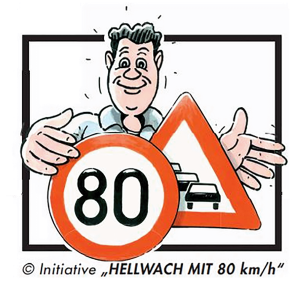
Wednesday Sep 13, 2023
Wednesday Sep 13, 2023
Dieser Podcast kann Leben zu retten!
"Schwerer Unfall auf der BAB 6, ein LKW-Fahrer lebensgefährlich verletzt, Fahrer fährt ungebremst auf einen LKW am Stauende!"
Fast jede Woche, manchmal auch täglich hören wir solche oder ähnliche Meldungen im Radio.
Da kein Fahrer absichtlich sein Leben riskiert, geht die Polizei in den meisten Fällen von Ablenkung aus.
Allgemeiner: Die Ursachen tödlicher Unfälle lassen sich eingrenzen auf:
„Unaufmerksamkeit“ und „Ablenkung“
Heute im Podcast: Dieter Schäfer Polizeidirektor a.D. mit über 40 Jahren Erfahrung im Polizeipräsidium Mannheim. Unermüdlich unterwegs, um in Verkehrssicherheitsfragen zu beraten und Mitbegründer des Vereins Hellwach mit 80 km/h e.V., der am 30. November 2018 gegründet wurde.
https://bit.ly/MAX80-Regeln
https://www.hellwach-mit-80-kmh.de/
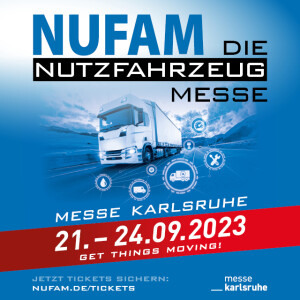
Wednesday Aug 16, 2023
Wednesday Aug 16, 2023
„Wir machen eine Nutzfahrzeugmesse“ – so der O-Ton von Bernadette Nemecz im Jahr 2009 am Telefon, wo es darum ging, eine neue LKW Messe aus der Taufe zu heben im Raum Karlsruhe in der DM-Arena.
Wie das alles so zusammenhängt und was es für Themen auf der NUFAM 2023 gibt, das erklärt uns heute im Podcast
Florian Klag (Projekt Manager der Messe)
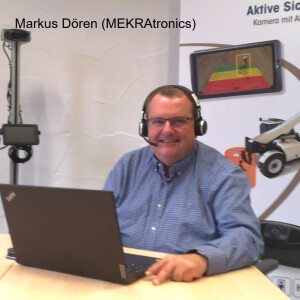
Tuesday Aug 08, 2023
Tuesday Aug 08, 2023
Sicherheit im Straßenverkehr ist besonders wichtig und hier engagiert sich auch die Tochter der MEKRA, die Fa. MEKRAtronics seit vielen Jahren. Der Slogan: Wir sehen uns sicher! Heute daher im Podcast Markus Dören Head of Sales bei MEKRAtronics, der sich seit über 7 Jahren mit Kamerasystemen befasst.
English transcript:
ALL in ONE - why camera systems in trucks are also available for TABLET monitors
JS= Jürgen Stausberg MD= Markus Dören
JS
If you research the topic of property damage and personal injury on the Internet - especially for recycling vehicles - it quickly becomes apparent that there are many individual systems to which the driver must pay attention: Vehicle monitor for navigation, monitor for side camera, alarm systems for turn assist, tablet with orders, smartphone, etc.
The problem is that while the driver can basically see almost all critical areas directly or through the mirrors, they often can't see them at the same time. The driver only has about two seconds to get his bearings. Two seconds to look through the windshield and side windows and into the up to six mirrors! Then, at a busy intersection, the situation has already changed again. If safety is to be improved here, it is therefore primarily a matter of showing the driver the accident-relevant areas at a glance.
The importance of this is also shown by the analyses of Hellwach mit 80 with the 10 rules
I will quote here only the particularly important rules 2-5
NO. 2
Only make urgent phone calls and only if a hands-free system is available. Every phone call is distracting.
NO. 3
Social media use via smartphone, notebook, tablet, etc., such as Facebook, WhatsApp, SMS or YouTube must be avoided.
NO. 4
Do not plan routes, change routes or process orders while driving.
NO. 5
Non-driving activities such as reading, making coffee, preparing meals, personal hygiene, etc. are incompatible with safe driving and must be refrained from.
So safety on the road is particularly important and this is where MEKRA's subsidiary, MEKRAtronics, has been involved for many years. We see ourselves safe! Is the slogan. Today in the podcast, Markus Dören, Head of Sales at MEKRAtronics, has been involved with camera systems for over 7 years.
Welcome Markus Dören
MD
Thanks for having me, great to be here, it's always good to talk to innovative and creative partners.
JS
SATLOG has been connecting camera systems to the telematics tablets for many years and chose MEKRAtronics because in a Franconian pragmatic way it was never a problem to create special solutions. We needed special adapter cables and MEKRAtronics created them, speeding up the integration. I remember very well when we got a call from Schwarzmüller on behalf of one of our customers asking us to send the adapter kits as soon as possible. We didn't know anything about MEKRAtronics at the time and were surprised how quickly the connection went.
Mr. Dören, who actually is MEKRAtronics, only the insiders know them.
MD
Mekratronics GmbH is a 100% subsidiary of MEKRA Lang, the leading supplier of mirror systems and camera monitor systems for commercial vehicles, especially trucks and buses in the OEM sector. A so-called hidden champion!
Safety is our topic!
With the growing importance of safety systems in commercial vehicles, MEKRAtronics has specialized in the development and sale of camera, monitor and radar systems. The driver is our focus, we enable a better view and thus we reduce the risks while driving and maneuvering.
Our cameras and radar-based turn assistants have been installed thousands of times in vehicles in Europe for years, also by large OEMs.
The adaptation to different displays is our daily business and therefore we could help in your case immediately.
JS
What makes MEKRA cameras so special that such large companies integrate them as OEMs?
MD
We call this "industrialization." The products are developed and produced according to strict specifications based on automotive standards. All the necessary tests and certificates are available. For example, our cameras have protection class IP69K, so they are also resistant to high-pressure cleaners. The delivery directly to our customers' assembly lines also places high demands on our logistics.
JS
But there are not only cameras for rear view and side view, but also turn assistants that start beeping when a cyclist approaches when turning. There are strict standards there. Can you tell us a little bit more about that? You've been in discussion with the Federal Motor Transport Authority on and off.
MD
Safety is, after all, our topic. Measures to protect cyclists and vulnerable road users have been in the spotlight in recent years.
We have had a radar-based turn-off assistant for years. The reliability and insensitivity of radar systems to light and weather conditions played a decisive role in the choice of the system. It works robustly in rain, fog, snow and dirt.
There is a lot of funding for systems that have been approved by the German Federal Motor Transport Authority. Regulations are implemented by us immediately, so we are in constant contact with the KBA with a MEKRA own department.
JS
Let's get to the real topic, which is that the camera image is also displayed on a tablet monitor, thus eliminating the need for the other monitors. Truck navigation and, in particular, order management with the digital signature run on the tablet. The driver navigates to the order with a click, which is imported to the tablet from the control center via a sim card. Now there are rear view cameras and side cameras and they should be displayed when the driver needs them and here MEKRAtronics has created an APP from many years of experience, which is firmly integrated on the SATLOG tablets via the firmware, which can do all this SmartTab+. Can you explain to us how this works?
MD
Displaying analog cameras on tablets is not as easy to realize as you think. The interfaces for existing CVBS cameras are not available. With the hardware solution of SATLOG we have a solution: Connection of up to four cameras and recording of the video stream.
Now the display has to be done in a way that the drivers get the important image information and are not distracted with too much information.
In plain language, if the driver is driving to the right, then the right side must also be displayed.
When reversing, the rear camera and in some cases the side camera.
We can set and save all that in our SmartTab+ app.
JS
Great app, especially interesting for recycling vehicles and the special thing the videos can yes even recorded and serve in case of damage to a much faster clarification and damage settlement.
MEKRAtronics has recently gone one step further and can also connect the new camera with the SmartTab+, which uses artificial intelligence to increase safety when maneuvering. How do you have to imagine that, every truck has a different maneuvering radius and danger zones, can you calibrate all that specifically? How does that work?
MD
Our ADA Cam detects people and actively warns when the person is within a defined zone. This is a milestone in increasing safety. Setting the three warning zones can be done browser based via any device with Wifi. The warning zones can be flexibly adapted to any application or vehicle.
Person detection takes place in the camera without any further control unit. This results in an extremely short response time and no additional resources on the tablet are loaded or delay the detection. The tablet can output the warning information as a signal and process this data.
JS
Fantastic, and it all works together with other cameras on a single tablet monitor.
Markus Dören, do you have a final anecdote for us? You've accompanied so many installations in fire engines, buses and semitrailer trucks. I'm sure there's a story there.
MD
Two years ago, we sold a camera system with radar turn-off assistant to a body manufacturer at the NUFAM trade show in Karlsruhe. The company's sales manager drove the truck train to the trade show himself.
At the fair he told us that the turn assistant and the side camera prevented a serious accident. He was warned early enough of several bicyclists approaching from the side in the blind spot. You can imagine how relieved the man was.
JS
Great, have many thanks, then always a good view - See you for sure.
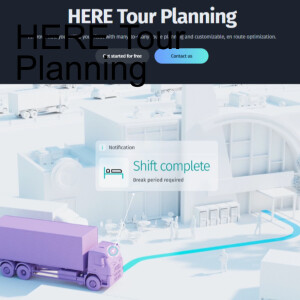
Wednesday Jul 05, 2023
Wednesday Jul 05, 2023
Tourenoptimierung mit HERE Technologies: Komplexe Hintergründe einfach erklärt von Amol Naik – Lead Product Manager
English transcript:
Speaker 1 (00:05)
The money is on the street. Welcome to the telematics podcast of the SATLOG academy. Every month, interested fleet managers, logistics managers, controllers and dispatchers will find interesting facts about controlling the truck fleet, optimization, digitalization. My name is Jürgen Stausberg. I am the managing director of SATLOG GmbH, which has been helping fleets in the beverage, fresh produce, recycling, construction logistics, freight forwarding, bakery, and mill industries to increase fleet efficiency with industry-specific solutions and telematics since 2000. The power of simplicity. Successful route optimization in the blink of an eye. And here with us today is Amol Naik from HERE Technology and he's going to show us the background of tour optimization. And this is, after all, a complex thing and it's based on HERE map technology. And I remember very well how I first found an internet map on my very lame PC more than 22 years ago. And at that time it said NetSolut underneath and I immediately drove to a startup office in Frankfurt and that was the start of the cooperation that has now been working very well for over 22 years. And HERE map technology makes it possible to show cars on the map, but also to optimize tours. And if you ask ChatGPT now, as they do all the time today, about the concept of route optimization, you get the following answer: Truck route optimization is special because it helps to make the transport of goods more efficient.
Speaker 1 (02:10)
By optimizing routes, order sequences and delivery times, companies can save a lot of time and money, reduce fuel consumption and improve their carbon footprint. At the same time, delivery reliability and punctuality are increased, which contributes to customer satisfaction. So an efficient truck route optimization you can achieve both economic and environmental benefits. From my point of view, this is very well summarized and sums up everything that can be achieved with tour optimization. But this is a very complex issue. In the past, you had to spend a lot of time on the setup of an optimization. And today on the podcast, we have Amol Naik from here Technology giving us insights into the complexity. Amol Naik has been in the high-tech technology scene for 13 years and has been a project manager in those very technology areas at here for five years. And welcome Amol Naik to our podcast today.
Speaker 2 (03:25)
Thank you, Mr. Stausberg. I look forward to the opportunity and I hope I can answer your question.
Speaker 1 (03:32)
Yes, exactly. Yes, there are so many map providers, TomTom, Google, NavTech here. And HERETechnology is yes one of the really big ones, so that's also installed in BMW and Mercedes. And maybe you can say a few words about HERE. After all, we've been working with this technology for more than 22 years.
Speaker 2 (03:55)
Exactly. So what you also said at the beginning, so we were as I said MAPSOLUTE 20 years ago as a startup. But after that, we've also grown a lot. So we play a very important role in the automotive industry, where we have just almost 75% market share when it comes to navigation systems, where our map is delivered. Not only simply because of market share, but also in terms of research. We invest a lot of money to make the map display automatic nowadays with machine learning and artificial intelligence. We have a large engineering team that tries to keep the data fresh. That is an advantage. Secondly, that we also invest a lot of money so that we can also provide the data precisely for the purposes that you said, for trucks, for route optimization, for example, precisely for trucks, which the others perhaps don't do, because trucks are not cars, by definition. And therefore, that is also where we just invest a lot of effort and time so that the routes we calculate, the tour we optimize, fit exactly, so that the driver relies on it and drives safely and sustainably.
Speaker 1 (05:10)
Yes, yes, our navigation systems in the trucks do include the map technology here. And how often have I received calls from truck drivers navigating with our tablet and oh, there's a new road closed since last week and so on. And these are all things like that, bridges, heights and truck widths, which they always add to the maps in real time. And that is something very special and important for the truck drivers. Exactly. How is a digital map created? You always read that the scouts drive through the streets and have a propeller on top. And how do you actually imagine that? Is there a large fleet? Yes, how does that actually work?
Speaker 2 (05:58)
Yes, exactly. So we also have a large fleet. And now it's no longer the case that we just do the cartography manually, but also very much by machine, so to speak. That is, the cars are equipped with many sensors, lidar for example, so that we can access the 3D mapping of roads or buildings or so in 3D the data. And this data is then automatically sent to the cloud. There, the data is also processed, again with machine learning and a lot of automation software. And then the data is also produced directly in a map, so to speak. And the cars, we have also seen, sometimes they also drive on the roads where there is a lot of traffic. That is, if such data, if we have the data available, then they also go for for example Traffic or what we also say with us, Road Incidences. That is, we not only map the roads such, but also such events where there is congestion or where there is a road closure. It also goes so far that many of our customers, for example the car manufacturers, we also have the possibility that they send us anonymized data about their cars, for example speed regulations or so that we are allowed to process them again with our GDPR client and also make them available to our end customers.
Speaker 2 (07:30)
That means that it's not just about our own fleet, but also about our customers having the possibility to send data to normal passenger cars. What we have also released today or recently is our Unimaps technology. That is, now there is the possibility that the customers themselves can process their own data with us and also make it available for other customers or just for themselves just the map display a little bit can also address the issue. This technology is completely automated and we are looking forward to customer feedback.
Speaker 1 (08:07)
Yes, there is also a lot from the mobile phone providers. So in our navigation systems, there's the, the traffic and the navigation, that's almost pinpoint accuracy. You drive to the end of a traffic jam and the map says. This is where the traffic jam begins. So it's always fascinating how up-to-date this traffic information is. Exactly. Where is the data processed? They must be very large databases. And in Germany, there's always the fear, oh, is it somewhere in a foreign country and is my data protected and so on.
Speaker 2 (08:44)
So the data that we collect ourselves is also processed on the public cloud. But nowadays there are also a lot of possibilities how to protect them, how to process them competitively or how to process them in a scalable way. So we are one of the big customers of AWS. We also have many strategic initiatives with AWS, for example for logistics, where AWS helps us with its services and expertise to better develop the application or the services. That is an advantage when we work very closely with public cloud service providers. That's one. But when it comes to customer data, we are a typical European company with headquarters in Eindhoven and Berlin. We all know how important this GdBA is for us, personally as well. And we also pass this on to our end customers. So if they want to protect their own data, then we have so-called REALM on platform, where the customer himself can set who has the right to process the data. Mostly it is about companies own data that are submitted and then just also different departments that has different access rights on it. It's not just about competition, it's also about internal in these large companies, so to speak, the selection of who may or may not access what data.
Speaker 2 (10:17)
We see this also in Transport Management System. For example, a user who sets or manages the prices is not allowed to see the data for the execution of this tour. So there are also different roles in this company and so accordingly we also have the possibility to set the user control or data access.
Speaker 1 (10:40)
Exactly, the other day I saw a special video from here. It's a very big topic, because here we have this data security, that nothing gets out and so on. Exactly. And now we come back to optimization. What forms of optimization are there? You can simply enter "drive from A to B" on the map, or you can do the same with the navigation system. I want to go to Mannheim to the main train station and so on and then it starts to plan a route. Or there is also the entire order pool. And what are the different planning scenarios? What can you actually do?
Speaker 2 (11:17)
So very generically speaking, there are two types of route optimization, so-called A to B, which is yes Traveling Salesment Problem. That's what we solve every day, so for example if I'm driving from my house to the office, then it's classic Travelling Salesman. I try to travel as short as possible, as fast as possible and as cheaply as possible to B. That's one of them. That is one. But that is possible. Or that is very important when it comes to trucks, tours and optimization. Of course, because we want to save costs. We want to produce our ETA on schedule. That's what this Travel Salesman is. But what we are also developing, and you also have experience with this, is this tool Planning, which is fleet-wide, which is fleet optimization. Here, a user can optimize the entire fleet in one request. Of course, this is very complex and requires a lot of computing power. And here we also have the possibility to design the tool planning with Tool Planning. But of course we're moving on now. We also want to look at the future, where we have electric vehicles, probably also hybrid trucks. And there we also have to look, where are the charging options?
Speaker 2 (12:33)
Where is the next charging point? Is that enough, my battery level up to my destination or do I have to recharge somewhere in the middle? The constraints, we also need to map those now slowly should/must. We also have our EV routing, especially for electric cars or with our tour planning there is the possibility that you can predefine the maximum distance and then the trucks or the tour or the gates are optimized, where the gates or the diamonds or the distances do not overlap this limit.
Speaker 1 (13:10)
Exactly. So that's more or less that the system automatically optimizes the tours like a cloverleaf. It's already high tech and it's incredibly fast and we're so happy. And are there any insights into how much you can save with optimization? SATLOG always comes up when we press the button, optimize for three minutes, and then afterwards we have the costs per transport unit. That is always the important factor, to take absolute costs and then see them in connection with the transport performance of the quantity, and we come out with between 10 and 15 percent. Have you heard similar figures from other companies or do you have any insights?
Speaker 2 (13:59)
Yes, we also have such findings from our customers, who build complete transport management systems with us with our complete stake. We have also counted 15% savings or with cost optimization. But it is not only about costs, it is also about automation advantages. That is, many of our customers have automated many processes. And that is of course not only for the customers, but also for the dispatchers very, very, very happy with the workflow, that you can optimize the whole tour with one click. Not only do you save time, but there are also options if something changes, i.e. a truck is somehow not available or a driver says I don't want to go to B but to C. You can dynamically reintroduce such constraints and get the new tour immediately. And that's a huge advantage. There are benchmarks, but it's also the customer experience, which we say is not so easy to measure. But we see that as a huge advantage as well.
Speaker 1 (15:07)
Yes, yes, that is exactly what is important. That's the advantage in the office, where you suddenly don't have to spend so much time looking back and forth on an Excel list, but you can see it transparently on the map. And where is the journey going with the developments? We've just been talking about electric vehicles, artificial intelligence and so on. Can you say anything about that?
Speaker 2 (15:35)
Well, I can also name two points for me that are only professional, but also very personally important, where we are moving. One is sustainability. That's very clear now, when we see outside, it's not just about some slogans or some goals, but we have to optimize our products or our work to such an extent that we have to make a small contribution so that we can live sustainably. That means we will now gradually look at how we can embed sustainability in our products. That means with touring planning, which I said, that we will slowly also be able to embed electric vehicles or plan tours for them, or have the data with charging stations so that we can rely on the fact that I can charge at these charging stations, for example. We also want to update such data and make it available to our customers. But for routing optimization, I see that we also have to link planning with execution. That means that if a dispatcher says this is the most cost-effective route, we also have to see whether the driver really adapts to it and drives in the same way, because that's where the advantage is. And it's not easy to combine execution with planning.
Speaker 2 (16:54)
Nobody wants the work to be observed or anything like that. That's why it wouldn't be that easy. But I think that's a win win situation is. Driver gains a lot of time from it or also drives safer for example and delivers the benefit of cost optimization further to the client. Yes, exactly. We see it as completely harmonious, so to speak. That's two advantages. Two directions.
Speaker 1 (17:20)
Yes, very good. And then finally, do you have an anecdote from your years of working in that environment. Did the trucks actually always arrive on time?
Speaker 2 (17:33)
So we have Amazon, for example. We all know how customer centric Amazon is. With my first child, we always relied on our Nappies from Amazon arriving exactly at the time when we didn't have a supply of Pampers. Yes, yes, exactly. Yes, if the yes, that we do not necessarily go to the nearest DM and then sell the Pampers, but the supplier delivers to us.
Speaker 2 (18:00)
Always on time.
Speaker 2 (18:03)
That's exactly the experience that we have. And again and again, that's not only for us as an end customer, but also for companies. When we talk about just in time, inventory management, it's very important for large customers that the shipments or the containers get to the customers on time.
Speaker 1 (18:21)
Exactly the time window and that can be compared to actual. Wonderful. Simplicity, that's what we're talking about today. And in order to be able to plan, it is necessary to have standing times, travel times, which HERE provides. And from telematics, you can very easily determine target times, and SATLOG does that, and accordingly has such achievable time windows for each individual customer within three minutes at the push of a button, and optimizes accordingly at the push of a button. And that is the special feature of this solution. That's it for today's podcast. Amel Naik from here. Thank you very much and see you next time.
Speaker 2 (19:05)
Thank you, Mr. Stausberg. Thank you for the opportunity.
Speaker 1 (19:08)
Yes, thank you very much. Bye. Bye.
Speaker 2 (19:09)
Bye. Bye. Bye. Bye. Bye. Bye-bye. Bye-bye. Bye-bye. Bye-bye. Bye.
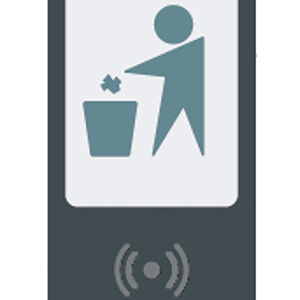
Friday Apr 28, 2023
Friday Apr 28, 2023
Raoul Janssen - Namdal Ressurs AS - berichtet wie die Norweger das Recycling effizienter gestalten.
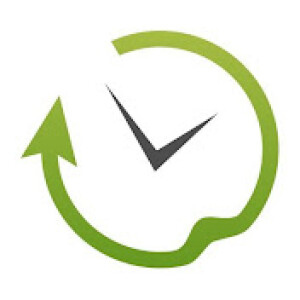
Wednesday Apr 05, 2023
Wednesday Apr 05, 2023
Wie ist das mit dem Paukenschlag: Arbeitszeiten müssen jetzt elektronisch erfasst werden. Ist das richtig?
Was muß man denn bei elektronischer Arbeitszeiterfassung alles beachten - im Hinblick auf DSGVO und der Archivierungspflicht
Wie geht das denn mit Schnittstellen, worauf muß man achten, wenn doch der Steuerberater mit DATEV arbeitet.
Wo sind denn die Terminals überall montiert, SATLOG kennt ja das LKW-Terminal als Truck Tablet
Auf welche speziellen Auswertungen muß man bei der Arbeitszeit denn Wert legen, kann man die Arbeitszeiten auch auf Projekte zuweisen?
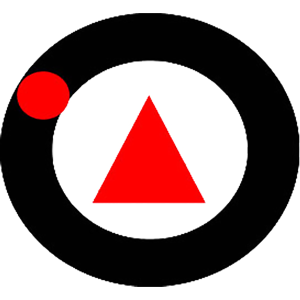
Monday Mar 06, 2023
Monday Mar 06, 2023
Was bedeutet Geld liegt auf der Straße und im Büro?
Woran erkennt man, dass die Transportlogistik Effizenzpotential hat?
Wie läßt der Fuhrpark denn digitalisieren





